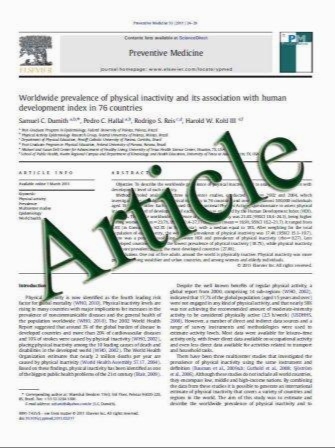Primary Ewing’s sarcoma of cranial bones: analysis of ten patients
- نوع فایل : کتاب
- زبان : انگلیسی
- مؤلف : Pravin Shashikant Salunke , Kirti Gupta , Vinod Malik , Narendra Kumar , Lauren E. Henke , Chunyu Cai , Wei-Shen Chen , John D. Pfeifer
- چاپ و سال / کشور: 2011
Description
Objective Ewing’s sarcomas are the second most common bone tumors in children and primary involvement of the cranium is uncommon. We analyzed retrospectively the data of ten patients with this rare subset of disease, who had been treated at our institute since 2005. Our aim was to assess the outcomes, recurrence rates and the selection of appropriate treatment methods. Methods The patients were reviewed with respect to their clinical presentations, treatment, and outcomes. Computed tomographic scanning of the brain was performed for all patients. Skeletal surveys with routine radiographs and technetium-99 bone scans to detect extracranial Ewing’s sarcomas were performed for all patients. For all ten patients, radical tumor excision was achieved surgically. Chromosomal translocation studies were carried out on paraffin blocks for nine patients, using fluorescence in situ hybridization (FISH) and polymerase chain reaction (PCR). All patients were then subjected to adjuvant multidrug chemotherapy and radiotherapy. The follow-up periods ranged from 2 months to 5 years (mean, 17.6 months). Results The predominant presenting features were headaches, increased intracranial pressure, scalp swelling and trigeminal nerve involvement. The erosion of dura and intradural extension was noted in eight patients in our series. All nine patients, in whom FSIH and reverse transcriptase PCR (RT-PCR) was done, tested positive for EWS–FLI1(t22:12) translocation. All patients underwent radical excision within safe limits, followed by chemoradiation. Three patients had local recurrences, which were detected within 12 months after surgery. All three of them died within weeks of presentation with recurrence. One patient experienced a recurrence after 30 months. This recurrent tumor was completely excised, and additional chemotherapy was administered. There was a local recurrence again after 18 months that was treated with surgery and chemoradiation, and the patient is still surviving 5 years after the primary surgery. One patient had metastasis at presentation and died within 2 months of surgery. The remaining five seem to have good outcomes, though the follow-ups were not very long. Conclusion The treatment of primary Ewing’s sarcoma of the cranium still remains to be radical surgery, aggressive multidrug chemotherapy, and radiotherapy. Neoadjuvant chemotherapy may not work in patients with large intracranial extension due to raised pressure making decompression imperative. The outcome is usually good if there is no early recurrence. Early recurrence, presence of metastasis and extremes of age probably bears a poor outcome. However, a larger series is required to confirm these findings
Acta Neurochir (2011) 153:1477–1485 DOI 10.1007/s00701-011-1028-z Received: 14 November 2010 / Accepted: 8 April 2011 / Published online: 26 April 2011 # Springer-Verlag 2011


